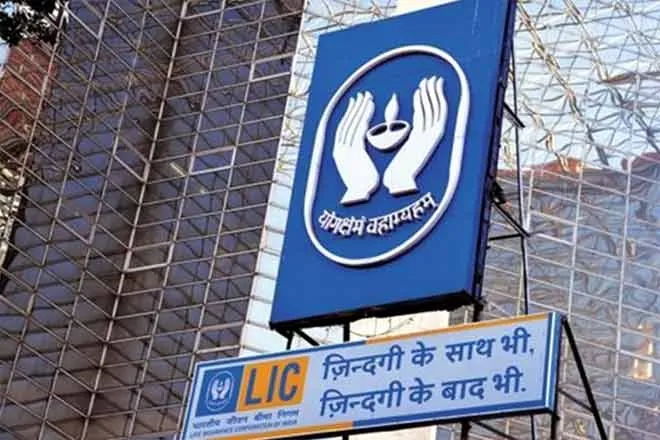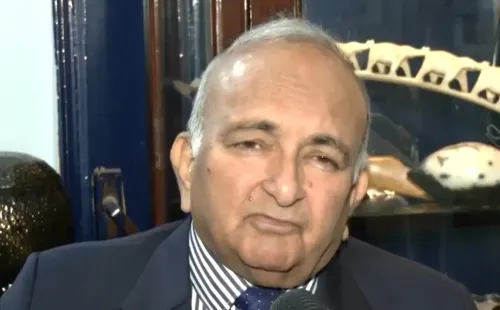What Are the Misleading Narratives in Washington Post’s Article on LIC-Adani Link?

Synopsis
Key Takeaways
- LIC has rebutted claims of governmental pressure on its investment decisions.
- Adani Ports has reduced its debt, contrary to claims of it piling up.
- International institutions are actively investing in Adani.
- LIC's exposure to Adani is minimal compared to its total debt portfolio.
- Adani is not LIC's largest investment, with other firms holding larger positions.
New Delhi, Oct 27 (NationPress) In light of the forthcoming Bihar Assembly elections and the upcoming Winter Session of Parliament, a media outlet based in the US has released an article claiming that the Government of India "pressured" LIC into investing as much as $3.9 billion in the Adani Group, which includes $568 million (Rs 5,000 crore) slated for May 2025.
The article is rife with false information, factual inaccuracies, misleading claims, and incorrect narratives. The Life Insurance Corporation of India (LIC) has promptly issued a formal rebuttal, labeling the Washington Post article as "false, unfounded, and far from reality."
Former LIC Chairman Siddhartha Mohanty has also condemned the report, asserting: "The Washington Post has crafted a misleading narrative against LIC's investments in the Adani Group, suggesting government interference. I firmly state that the Government has never meddled, either directly or indirectly, in any investment decisions of LIC. I urge The Washington Post to retract the unverified claims from all platforms and avoid publishing such baseless accusations."
Sources familiar with the situation indicate that the article is founded on erroneous assumptions that Adani Ports & SEZ required funds to refinance its debts, claiming that “Adani’s ports subsidiary needed to raise around $585 million in a bond issue to refinance existing obligations.”
There was no such refinancing requirement. As clearly articulated in Adani Ports & SEZ’s official media release on May 30 this year, the funds procured from LIC were designated for the proposed buyback of bonds maturing between 2027 and 2029—not for refinancing existing debts.
Subsequently, in July, Adani Ports initiated a tender offer to repurchase up to $450 million of outstanding US dollar bonds, all set to mature between 2027 and 2029.
The second paragraph of the article inaccurately states, “India’s second richest individual, whose net worth hovers around $90 billion, was charged with bribery and fraud last year by US authorities, and several major American and European banks he sought loans from were reluctant to assist.”
The truth is that numerous American and European firms have invested in Adani in recent months, all of which is publicly available information.
In April 2025, BlackRock made an investment in Adani’s private entities. In June 2025, Apollo’s Athene Life spearheaded a $750 million (Rs 6,650 crore) investment in Adani’s Mumbai Airport, with participation from several insurers.
In September 2025, leading Dutch Bank—Rabobank—and DZ Bank, Germany’s second-largest bank by assets, poured investments into Adani’s Green Assets.
The opening statement in the article that debt was "piling up quickly this spring" is untrue.
Adani’s debt figures or balance sheets are not disclosed for the April to June 2025 quarter, as Indian corporations typically release balance sheets semi-annually—thus, this claim remains unverified.
Moreover, Adani Ports & SEZ has actually reduced its debt in FY25 compared to FY24, now standing at Rs 36,422 crore. The leverage of no Adani group company has escalated in FY2025.
Leverage is a financial metric easily verifiable from corporate balance sheets, yet this was not performed. Instead, a dramatic, alarming situation is fabricated in the opening statement to bias the reader.
Furthermore, for FY25, Adani Portfolio’s EBITDA was Rs 89,218 crore, with total long-term debt at Rs 2.65 lakh crore, and a cash balance of Rs 53,843 crore. This indicates that Adani can clear all debt in less than three years if it halts investments.
Adani Ports & SEZ holds a ‘AAA’ rating from all four major domestic rating agencies—the highest rating attainable by any Indian corporation—reflecting the strongest credit quality and utmost safety for lenders, including LIC.
Additionally, the ‘BBB–’ rating from Fitch for Adani Ports’ subsidiary and Adani’s two green units matches India’s sovereign rating, the highest international rating any Indian entity can acquire, which LIC can invest in.
Labeling such investments as “too risky for a low-risk lender like LIC” is factually unfounded and misrepresents both Adani Ports’ financial robustness and LIC’s prudent investment policies, according to insiders.
The article cites Tim Buckley stating, “Why should he sell them if he can actually just get the government of India to keep funding him?” he remarked. “It’s the Indian populace that needs to keep bailing him out.”
The fact remains that Adani has never required any bailout from the Indian populace, the government, or its institutions. Over 75% of Adani Ports’ debt is foreign, with the remainder sourced from a mix of domestic institutions, including top mutual funds and banks.
This is not the first instance where LIC, boasting an AUM exceeding Rs 55 lakh crore, has been the sole subscriber to an issuance. LIC has also solely subscribed to long-term issuances from institutions like Vedanta (AA rated), L&T Finance (AAA rated), NIIF Infra Fund (AAA rated), Shriram Finance Ltd (AA+ Rated), India Infradebt Limited (AAA rated), and Arka Fincap Ltd. (AA rated).
In November 2023, Reliance Industries successfully raised Rs 20,000 crore through a decade-long domestic bond issuance via private placement, marking the largest such sale by an Indian non-financial entity at the time, and the issue was considerably oversubscribed, with LIC acquiring the lion’s share of Rs 12,000 crore.
LIC is poised to earn an additional 1.26 percent spread over a 15-year GSEC bond on the underlying Rs 5,000 crore loan to APSEZ’s AAA issuance, translating to a supplementary Rs 950 crore profit over the bond tenure compared to a similarly rated 15-year Government Bond. (Total yield on APSEZ AAA issuance—7.65 percent, while the 15-year G-Sec Yield offered 6.49 percent yield).
Debt from LIC constitutes less than 3 percent of Adani’s total debt. Fifty percent of the debt is sourced from international investors, including participants from the US, Europe, the Middle East, and Asia Pacific, featuring some of the most reputable names globally in the investor list.
Not only LIC but various other top institutions, including ICICI Prudential, Nippon and SBI mutual funds; HDFC and ICICI banks; LIC of India, infrastructure-oriented funds like NIIF Infra, Aseem Infra, and IIFCL, along with top provident funds, have invested in Adani's bond offerings over the past six months.
In fact, LIC’s debt exposure to Adani is less than 0.3 percent of its total debt portfolio. On the equity front, LIC has invested Rs 30,127 crore in Adani companies, the value of which has nearly doubled over the past four years.
Additionally, Adani is not LIC’s largest holding—Reliance, Tata Group, ITC, SBI (SBI Bank and SBI Cards), L&T, HDFC, and Infosys surpass it.










